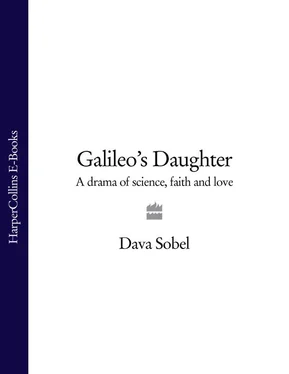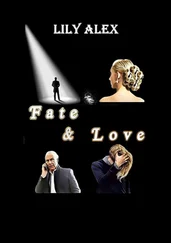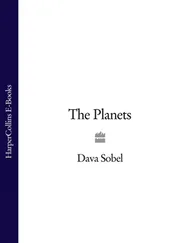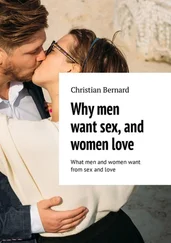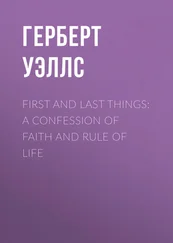These letters, which have never been published in translation, recast Galileo’s story. They recolour the personality and conflict of a mythic figure, whose seventeenth-century clash with Catholic doctrine continues to define the schism between science and religion. For although science has soared beyond his quaint instruments, it is still caught in his struggle, still burdened by an impression of Galileo as a renegade who scoffed at the Bible and drew fire from a Church blind to reason.
This pervasive, divisive power of the name Galileo is what Pope John Paul II tried to tame in 1992 by reinvoking his torment so long after the fact. ‘A tragic mutual incomprehension’, His Holiness observed of the 350-year Galileo affair, ‘has been interpreted as the reflection of a fundamental opposition between science and faith.’
Yet the Galileo of Suor Maria Celeste’s letters recognised no such division during his lifetime. He remained a good Catholic who believed in the power of prayer and endeavoured always to conform his duty as a scientist with the destiny of his soul. ‘Whatever the course of our lives,’ Galileo wrote, ‘we should receive them as the highest gift from the hand of God, in which equally reposed the power to do nothing whatever for us. Indeed, we should accept misfortune not only in thanks, but in infinite gratitude to Providence, which by such means detaches us from an excessive love for Earthly things and elevates our minds to the celestial and divine.’
[II] This grand book the universe
THE RECENTLY DECEASED RELATIVE Suor Maria Celeste mourned in her first extant letter was Virginia Galilei Landucci, the aunt she’d been named after. At the Convent of San Matteo, she shared her grief with her natural sister, Suor Arcangela (originally the namesake of Galileo’s other sister, Livia), and also with her cousin Suor Chiara – the departed Virginia’s own daughter Virginia.
A repetition of recollected identities echoed through the Galilei family like the sound of chanting, with its most melodic expression in the poetic rhythm of the great scientist’s full name. By accepted practice among established Tuscan families in the mid-sixteenth
century, when Galileo was born, the eldest son might well receive a Christian name derived from his parents’ surname. Accordingly, Vincenzio Galilei and his new wife, Giulia Ammannati Galilei, attracted no special attention when they gave the name Galileo to their first child, born at Pisa on the 15th day of February in the year of Our Lord 1564. (The year was actually recorded as 1563 in the chronicles of that period, however, when New Year’s Day fell on 25 March – the feast of the Annunciation.)
The family name Galilei, ironically, had itself been created from the first name of one of its foremost favourite sons. This was the renowned doctor Galileo Buonaiuti, who taught and practised medicine during the early 1400s in Florence, where he also served the government loyally. His descendants redubbed themselves the Galilei family in his honour and wrote ‘Galileo Galilei’ on his tombstone, but retained the coat of arms that had belonged to the ancestral Buonaiutis since the thirteenth century – a red step-ladder on a gold shield, forming a pictograph of the word buonaiuti , which literally means ‘good help’. The meaning of the name Galileo, or Galilei, harks back to the land of Galilee, although, as Galileo explained on this score, he was not at all a Jew.
Galileo Galilei took a few tentative steps along his famous forebear’s path, studying medicine for two years at the University of Pisa, before he gave himself over to the pursuit of mathematics and physics, his true passion. ‘Philosophy is written in this grand book the universe, which stands continually open to our gaze,’ Galileo believed. ‘But the book cannot be understood unless one first learns to comprehend the language and to read the alphabet in which it is composed. It is written in the language of mathematics, and its characters are triangles, circles, and other geometric figures, without which it is humanly impossible to understand a single word of it; without these, one wanders about in a dark labyrinth.’
Galileo’s father had opposed the idea of his becoming a mathematician and tried, arguing from long personal experience with mathematics and patrician poverty, to dissuade his son from choosing such a poorly paid career.
Vincenzio made a minimal living giving music lessons in the rented Pisan house where Galileo was born and partly raised. He also dabbled in the business dealings of his wife’s family, the Ammannati cloth merchants, to supplement his small teaching income, but he was at heart a composer and musical theorist in the days when musical theory was considered a special branch of mathematics. Vincenzio taught Galileo to sing and to play the organ and other instruments, including the recently remodelled lute, which became their favourite. In the course of this instruction he introduced the boy to the Pythagorean rule of musical ratios, which required strict obedience in tuning and composition to numerical properties of notes in a scale. But Vincenzio subjected these prevailing rules to his own studies on the physics of sound. Music, after all, arose from vibrations in the air, not abstract concepts regarding whole numbers. Using this philosophy, Vincenzio established an ideal tuning formula for the lute by fractionally shortening the intervals between successive frets.
After Vincenzio moved to Florence with his wife in 1572, temporarily leaving Galileo behind in the care of relatives, he joined other virtuoso performers, scholars and poets bent on reviving classic Greek tragedy with music. *Vincenzio later wrote a book defending the new trend in tuning that favoured the sweetness of the instrument’s sound over the ancient adherence to strict numerical relationships between notes. This book openly challenged Vincenzio’s own former music teacher, who prevented its publication in Venice in 1578. Vincenzio persevered, however, until he saw the work printed in Florence three years later. None of these lessons in determination or challenge to authority was lost on the young Galileo.
‘It appears to me’, Vincenzio stated in his Dialogue of Ancient and Modern Music , ‘that they who in proof of any assertion rely simply on the weight of authority, without adducing any argument in support of it, act very absurdly. I, on the contrary, wish to be allowed freely to question and freely to answer you without any sort of adulation, as well becomes those who are in search of truth.’
When Galileo was ten, he journeyed across Tuscany to join his parents and his infant sister, Virginia, in Florence. He attended grammar school near his new home until his thirteenth year, then moved into the Benedictine monastery at Vallombrosa to take instruction in Greek, Latin and logic. Once there, he joined the order as a novice, hoping to become a monk himself, but his father wouldn’t let him. Vincenzio withdrew Galileo and took him home, blaming an inflammation in the youth’s eyes that required medical attention. Money more likely decided the issue, for Vincenzio could ill afford the down payment and regular upkeep required to support his son in a religious vocation that generated no income. A girl was different. Vincenzio would have to pay dowries for his daughters, either to the Church or to a husband, and he could expect no return on either investment. Thus Vincenzio needed Galileo to grow up gainfully employed, preferably as a doctor, so he could help support his younger sisters, now four in number, and two brothers.
Vincenzio planned to send Galileo back to Pisa, to the College of the Sapienza, as one of forty Tuscan boys awarded free tuition and board, but couldn’t obtain the necessary scholarship. A good friend of Vincenzio’s in Pisa offered to take Galileo into his own home, to reduce the cost of the boy’s education. Vincenzio, however, hearing that this friend was romancing one of Galileo’s Ammannati cousins, held off for three years until the love affair ended in marriage and made the house a respectable residence for his son.
Читать дальше
